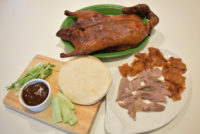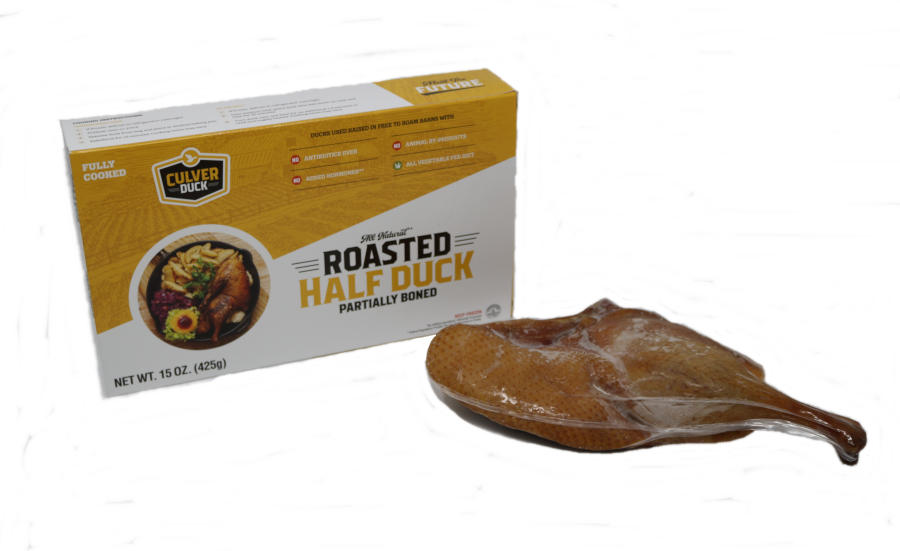Independent Processor's Prime Cuts
Culver Duck: Shaking up the duck market
Duck user-friendly products and an animal welfare certification make Culver Duck a good fit with today's consumers.








The U.S. poultry market is dominated by chicken and turkey, but there are plenty of other options for consumers. Duck is a popular choice for restaurant diners who want to try something different. It’s one of the few proteins where the most popular usage is in the foodservice sector. The goal of duck processors is to take that same level of interest and bring it to the retail sector.
“Stable is the one word I would use to describe the duck industry at this time,” says Kyle Fabing, director of sales and marketing for Culver Duck, headquartered in Middlebury, Ind. “Annual duck production was growing well up until the great recession in 2008-’09, which brought a sizeable drop to the industry. However, over the last five years there has been steady growth to help stabilize the industry.”
Culver Duck is mostly known within the Asian food community, with its primary markets in Houston, Dallas, Chicago, Seattle, and San Francisco. Its most popular products have been head-on or headless ducks, but its latest items focus on the value-added sector. Items like fully-cooked half ducks, smoked breasts and leg confit can be ready-to-eat within 15 minutes. The company was one of the processors who had exhibited their new products at the 2019 Annual Meat Conference in Dallas.
“Our goal is to be able to offer fast, convenient, and healthy options for anyone, regardless of skill inside a kitchen,” explains Fabing. “Duck has two main stereotypes attached to it: First, people automatically think it’s greasy and gamey, and second, that it’s too hard for them to prepare. Our new line of products helps debunk both of those stereotypes.”
Along with a new line of products, Culver Duck has a new third-party certification. Earlier this year, the company became the first duck producer in the country to earn certification for the treatment of its animals from American Humane, the country’s first national humane organization and the largest certifier of animal welfare in the world.
Culver’s animals are raised in Amish country in Northern Indiana, within 60 miles of its processing facility. The company’s growing partners are independent family farms that are comprised of mostly Amish families.
“We have very strict animal welfare guidelines for the raising and handling of our ducks. Our ducks are housed in open, barn-type structures with ample fresh air, water, food and natural sunlight. The ducks also enjoy plenty of room to roam and congregate as ducks naturally want to do,” explains Sean Smith, director of compliance & project development. “We use the universally accepted ‘5 Freedoms of Animal Welfare’ as our guide to ensure all of the duck’s needs are being met.”
Smith says the company has worked hard to improve its internal animal welfare standards and still works with industry professionals and academia to identify new ways to improve the lives of the ducks. Working with a well-established third-party certification party helps to demonstrate that its work has yielded positive results.
“American Humane Certified and their audit standards are highly respected in the industry and are a verification of our commitment to animal welfare,” he adds.
Such claims also have a positive impact among consumers. Culver Duck promotes itself to consumers through transparency and education, Fabing says. It uses its marketing to educate consumers that a farm-raised duck breast is leaner than most other protein options, and a claim of humanely raised animals helps to boost its transparency efforts.
“If we can have another voice supporting our claims and vision, then it lends credibility to what you have and are trying to introduce to a new consumer. That is where American Humane Certified comes into play,” he adds.
Between its new products and its new certification, Culver Duck has the appealing product portfolio and the feel-good attributes to bring more consumers into the duck category.
“There were a number of publications over the last year that has called duck one of the up and coming menu options,” Fabing points out. “I’m not sure how that ranking is established, but I want to help back up what they are saying!”
Looking for a reprint of this article?
From high-res PDFs to custom plaques, order your copy today!









